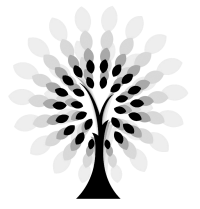Table of Contents
Haulm
A haulm or holm is a thaumaturgical indjinn or lamenary, capable of interacting directly with the human brain using neuromancy.
Magicplugin-autotooltip__small plugin-autotooltip_bigMagic
Magic, also called thaumaturgy is the art and science of harnessing elementals, and instructing them to carry out simple or complex tasks.
Invoking more powerful spirits or gods is a related but much more dangerous art, called theurgy.
Magic
magic
This is in a series of articles about
 plugin-autotooltip__small plugin-autotooltip_bigMagic
plugin-autotooltip__small plugin-autotooltip_bigMagic
Magic, also called thaumaturgy is the art and science of harnessing elementals, and instructing them to carry out simple or complex tasks.
Invoking more powerful spirits or gods is a related but much more dangerous art, called theurgy.
Magic
magic
This is in a series of articles about
This is in a series of articles about magic, thaumaturgy and esotericismplugin-autotooltip__small plugin-autotooltip_bigMagic
Magic, also called thaumaturgy is the art and science of harnessing elementals, and instructing them to carry out simple or complex tasks.
Invoking more powerful spirits or gods is a related but much more dangerous art, called theurgy.
Magic
magic
This is in a series of articles about.
The word is a portmanteau of thaumic helm. Since they must be in direct contact with the skull, they are produced in the form of a metal crown or helmet, often elaborately decorated with symbols indicating their function and ownership. They were perfected by the Holistician School of the Rasian Academy, and were an essential part of their philosophy and practice. Since neuromancy was declared malefaction by the Magisteriate, all known haulms were located and destroyed, though some are still rumoured to have survived.
Composition
Rasian haulms of the classical period resembled domed or conical crowns, composed of ductile metals like copper, gold and various alloys. The internal structure consisted of a lattice of wires and crystals, depending on the intended function, be it calculation, visualisation or projection. Classical haulms were had an outer casing of thin chased metal with various designs indicating the function. Later versions had a wire filigree shell, which combine both form and function, as well as being much lighter to wear.
Similarly, the underside in contact with the skull was smooth metal in older models, later varieties having a more comfortable lattice which gave a better fit. High ranking holisticians shaved their head or wore a tonsure, believing this necessary for a good contact with the haulm.
Once the physical object was created, a master holistician would bind an elemental to the metallic structure, imprinting it with a variety of thaumaturgical sequents, sets of instructions which allowed the device to read memories, perform calculations and analyses, and to interact with the memory of its wearer.
Function
Holisticians believed that it is only possible to understand any one thing by examining it in it's complete context, including all the factors that led to its creation, be they geographical, sociological, anthropological, and so on. Since no one person can possibly have complete knowledge of and be expert in multiple fields, haulms were designed to be repositories of knowledge, which a holistician could access while pondering a problem.
Knowledge was “read into” a haulm by placing it on the head of an expert in a particular subject, who was then instructed to go through various memory procedures and thought experiments which enabled the device to read that knowledge. This was then stored in the device's shell memory.
With sufficient training, a holistician could interact with information stored in the haulm. Additionally, they could use its powers to make complex calculations, holistic models, and predictions. Skilled holisticians could use several haulms covering a number of different areas of expertise in parallel, using crowns specially designed to be able to add multiple holms.
Similar devices were used in ancient Miyarris. A few haulms still exist today, held in private collections or in the archives at Rasia, but the skills required to access the knowledge stored within them has long since been lost.